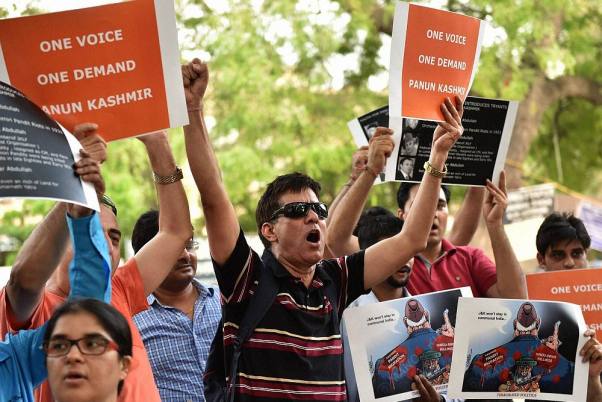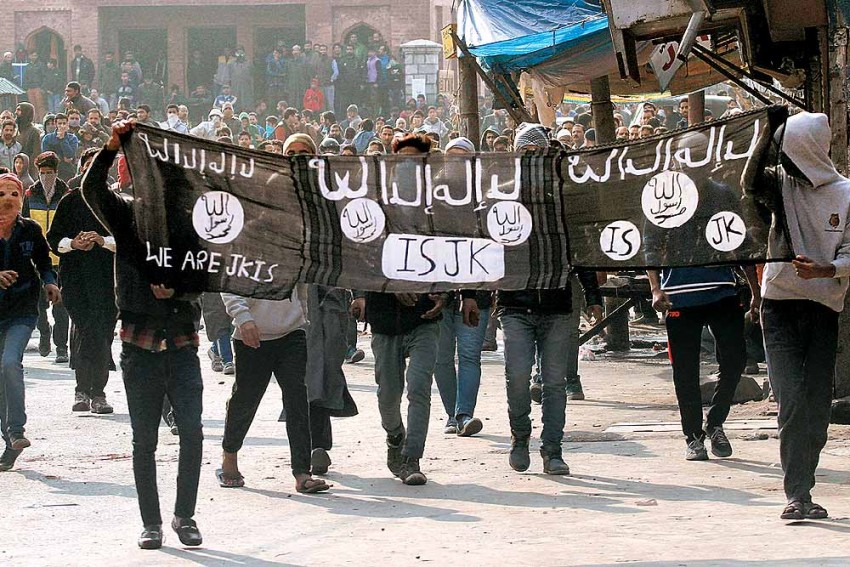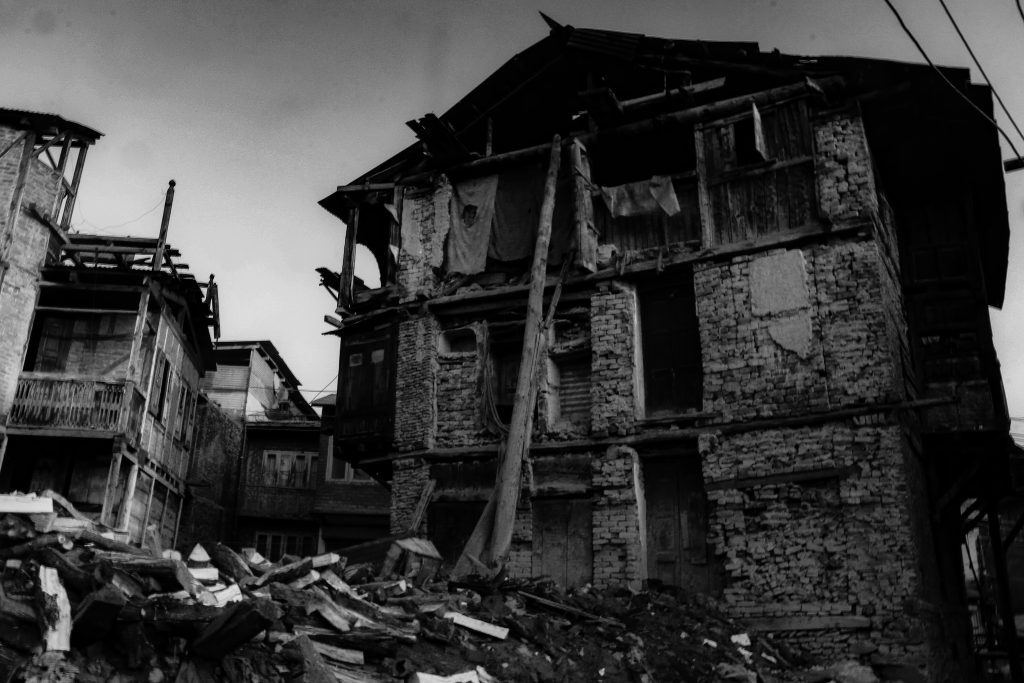
अगर फ़िरदौस बर-रू-ए-ज़मीं अस्त
हमीं अस्त ओ हमीं अस्त ओ हमीं अस्त!
It’s been 31 years since the fiercely challenging events happened in the “Paradise of Earth” which culminated in the terrific exodus of Kashmiri Hindus from their homeland. It was marked in the history of India, as one of the events which almost destructed its face of “Secular State”. This turmoil was not out of blue. Instead, it was an outcome of prolonged injustices, manipulations of militancy, other dirty political tricks etc.. Before getting into the reasons and scenarios behind the departure or cleansing process which led to the darkest days of the Kashmiri Hindus which traumatizes them till the end of their lifetime, we should have a glance at their past.
Dogma not only results in the form of gross, zealous behaviour such as the killing of ethnic minorities as part of a cultural cleansing, it is substantiated by warped statements of certainties that corrupt the mind and make you a slave to further the agenda the organization that initiated it.
Martin Dansky
Among the Kashmiri Hindus, most of them belonged to the Kashmir Pandit sect. The Kashmiri Pandits, who, also known as Kashmiri Brahmins are a group of Hindus which is a part of the larger Saraswat Brahmin community. Most of their original settlement was in the Kashmir valley since the establishment of their sect. They are the only remaining Kashmiri
Hindu community native to Kashmir. The Kashmiri Pandits had been a privileged section of the population of the valley from time of Dogra rule (1846–1947). Due to consequence of the 1950 land reforms, 20% of them left the valley, and later in 1981, the population amounted to 5% of the total. However, the other respect for the Pandits as many of them were handling many of the elite positions or jobs such as teachers, Government officers etc., and a shared Kashmiri identity that held Pandits and Muslims together prevented differences from erupting into conflict. But everything hanged by the period of 1989-90.
Those who left, thought they would be gone for three or four months, and that they would return when things improved, no one expected to stay there for years. Kashmir had always been a peaceful state.
Source

According to many sociologists and political critics, from the starting of the ’80s, there were many social indicators which gave hints that depicted the future destruction of the abovementioned brotherhood between the Muslim community and Hindu community in Kashmir. Firstly, Sheikh Abdullah had died in 1982, and the leadership of the National Conference passed on to his son Farooq Abdullah, who won the 1983 election. Secondly, within two years of newly elected leader, the Centre broke up the National Conference and installed Mr Ghulam Mohammed Shah as Chief Minister. This led to huge disaffection and political instability. Thirdly, the forgery that happened in the election of 1986–87, where pro-Delhi political parties were announced victorious despite their visible and know loss in the elections. This created a political rebel and those who felt deceived started an anti-Delhi movement. These people were separatists who Indian government called anti-national. Fourthly, in 1986, after the Central government initiation in the opening of the Babri Masjid locks to enable Hindus to offer prayers there which caused a swell in Kashmiri Muslims too and this incident resulted in attacks of Hindu temples, and shops and properties of Kashmiri Pandits in Anantnag. Lastly, the J&K Liberation Front (JKLF) stepped up into. The hanging of the militant leader Maqbool Bhat in 1984 also ignited the militancy in Kashmir. The 1989 submission to the JKLF set the stage for the next decade. By then, the Pandits had begun to be targeted.
The events of 19 January 1990 were vicious and brutal as I earlier mentioned. That dawn was different and peculiar as many public places such as mosques, walls of houses etc posted the declarations that expressly stated that Kashmiri Pandits were Kafirs and the males were instructed to leave Kashmir or convert to Islam or ready to face a brutal death.
Those who chose to the first option were told to leave their females behind. They also told the Kashmiri Muslims were to identify the Hindus so they could be systematically marked for conversion or killing. Later that night and following days many Hindu families were burnt to death, tortured, raped etc. According to many Kashmiri scholars, there were also victims from the Muslim community also such as Muslims who try to protect Hindu neighbour or a friend from militants were tortured, many young males were abducted and forcefully recruited to militancy group.

The Pandits could see slogans written all over the walls of their homes. If they were lucky enough to see the night through, they would have to vacate the place before they met the same fate as Tikka Lal Taploo and many others. The ethnic cleansing was surely staring them in the face. By morning, it became apparent to Pandits that Kashmiri Muslims had decided to throw them out from the Valley. Broadcasting vicious Jihadi sermons and revolutionary songs, interspersed with blood-curdling shouts and shrieks, threatening Kashmiri Pandits with dire consequences.
ज़ालिमो, ओ काफ़िरो, कश्मीर हमरा छोड दो,
कशमीर में अगर रहना है तो अल्ला-हो-अकबर कहेना होगा
ला शरकिया, ला घरबिया
इसलामिया इस्लामिया
पाकिस्तान से रिश्ता क्या? ला इलाहा इल्लल्लाह
दिल में रखो अल्लाह का खौफ, हाथ में रखो कलाश्निकोव
मुस्लमानो जागो, काफिरो भागो, इस्लाम हमारा मक़सद है, क़ुरान हमरा दस्तूर है, जिहाद हमारा रास्ता है, कश्मीर बनेगा पाकिस्तान
यहां क्या चलेगा, निज़ाम ए मुस्तफा
People’s League का क्या पैगाम, फ़तेह, आज़ादी और इस्लाम
Posters posted on the walls and slogans written in fairly large letters, proclaiming Kashmir as the ‘Islamic Republic of Kashmir’, could be seen in the entire Valley.
Aftermath the Insurgency

In reference to many sources, from the night approximately 100,000 of the total Kashmiri Pandit population of 140,000 left the valley during the 1990s. Some authors who wrote regarding this scenario, have put forward a higher figure for the exodus, ranging from the entire population of over 150,000 to 190,000 of a total Hindu population of 200,000 to a number as high as 800,000.
By 2011, only an estimated 2,700-3,400 Pandits remained in the Kashmir Valley. Now also the government has reported on the terrorist threats to Pandits still living in the Kashmir region. According to a J&K government report, 219 members of the community had been killed in the region between 1989 and 2004 but none thereafter. There were more defects had been caused to the victims like:
- After their departure, their houses were remained abandoned in the Kashmir Valley. The Miscreants looted household goods, furniture, kitchenware, etc. Electricity and sanitary fittings were pulled out, taken away and sold. In most cases, even the doors and windows of these houses were removed and stolen.
- The bare structures were set on fire if these did not happen to be in densely populated areas. Large number of houses and properties went on distress sale.
- The locals took hold of their shops, though a handful of them fetched the owner some money. In certain villages, the ruins of Pandit’s houses were grabbed and entered in revenue record as a Muslim Endowment (Awqaf) property.
- The properties were sold at a throwaway price.
- Landed properties of Pandit shrines, temples and crematoriums stand largely vandalized and seized.
- Many of the refugee Kashmiri Pandits were been living in abject conditions in refugee camps of Jammu. There are now also people struggling to have a permanent shelter.
- The Kashmiri Hindus also faced social tragedies like for children of the refugees to lose their cultural capital and for elders to face a strange new world where they feel disempowered and many are still facing post-traumatic stress disorder.
In 2010, the Government of Jammu and Kashmir noted that 808 Pandit families, comprising 3,445 people, were still living in the Valley and that financial and other incentives put in place to encourage others to return there had been unsuccessful. Now, the people of the Kashmir Valley claim to have the largest Sunni Muslim in the world as they have 99% of the Muslim population with a few negligible minorities which are not more than 1%.

“We both were victims. The only difference between us and Muslims is that they have homeback in Kashmir but we don’t.”
Even though the abrogation of Article 370 had given the Kashmiri Hindus who are at present scattered in places like Jammu, Delhi NCR, Punjab etc. a ray of hope, of resettling in their ancestral land, the answer for the question of returning of the Kashmiri Pandits to the Kashmir Valley is solely depending upon the goodwill of the majority community. So we can patiently hope for that fruitful future where the earlier brotherhood gets restored and become stronger which is already started by the new generation of the valley.
सबने अकेला छोड़ दिया, मै भी देश का हिस्सा हूँ,
भटक रहा हूँ तनहाई में, भुला नहीं कोई किस्सा हूँ,
छीनी विरासत मेरी दिलाओ मै धोखे से अचंभित हूँ,
मुझसे मेरा दर्द न पूछो, मै कश्मीरी पंडित हूँ!